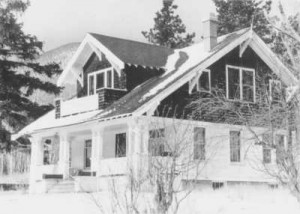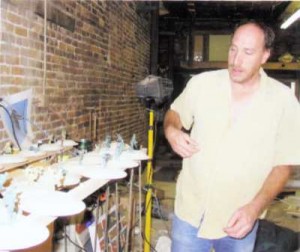Review by Steve Schechter
Alternative energy – December 2003 – Colorado Central Magazine
Power with Nature – Solar and Wind Energy Demystified
By Rex A. Ewing
Published 2003 by PixyJack Press. LLC
ISBN 0-9658098-5-4
THIS BOOK ISN’T EASY to classify. It could be a love story; or a fable (Hank the cow dog meets Amory Lovins); or a primer on using solar and wind to power your home.
The love story is how the author met LaVonne (the book’s illustrator and photographer) during a trip from his ranch to town to buy supplies at a local ranch supply outlet. During a conversation with the store’s owner on the wiring of the author’s solar-powered pond pump, Ewing noticed a statuesque woman standing close by and instantly knew that she was the woman of his dreams. The conversation apparently interested this woman, and when he drew her into the discussion, he was able to get her to visit his ranch, and the rest is history. Within months LaVonne was Mrs. Ewing and had moved into Rex’s small and very rustic cabin on his horse ranch. The couple decided to sell the ranch and buy a mountain parcel with a small cabin and to build a log home with a solar and wind, off-the-grid, power system.
This fable is dispensed in the first chapter (1/3 of the book), “Dog of the Sun, Cat of the Wind,” with the ranch cats, dogs, and wildlife portrayed as almost human characters, perhaps to draw reluctant readers into off-grid thinking. This is the weakest and yet most humorous section of the book. So when the reader finally gets to the real meat of the book, there is great relief.
THE FINAL FOURTEEN CHAPTERS offer useful information on how to decide what sort of solar systems are good to use when building or adding a renewal energy system to an existing or new home. The most detailed chapters give wonderful information on photovoltaic and wind-powered systems and coupled with the appendixes are a great source for anyone contemplating going either completely off grid or investing in some sort of grid-tied system.
For the Ewings, the choice was simple; they lived several thousand feet from the nearest utility pole and the cost of tying into the grid would have probably been greater than the cost of their sophisticated off-grid photovoltaic and wind-powered system. They never looked back on their decision because they, unlike most of us, will never have to worry about blackouts, brownouts, or how their coal and gas reliant power suppliers are contributing to global warming.
The only drawback, as the Ewings readily admit, is that when something goes wrong with their system, the quickest, easiest and cheapest fix is for them to do the repairs.
But people interested in installing off-grid systems should acquire intimate knowledge of such systems and learn how to safely make repairs, because repairing a system like the Ewings’ isn’t as easy as calling the neighborhood electrician. For example, I know that there is only one licensed electrician in Gunnison County who has intimate knowledge of off-grid systems — so when your off-grid system goes down, it’s not sensible to expect immediate service.
The third chapter in this book, “Beginning Considerations — building smart to keep the power bill low,” should have discussed building your off-grid dream home to be as energy efficient as possible. It also should have given the reader some examples of differing building techniques to achieve maximum thermal efficiency. But it didn’t.
THESE OMISSIONS are probably because the Ewings built a log home, however. And in my opinion, log homes are very energy inefficient. Most western species of wood are less than R-1 (resistance to heat flow) per inch. This would put the Ewings’ walls at less that R-8, which is about as efficient as an old-fashioned mobile home wall. To counter the resultant heat loss in a log home, most log homebuilders put in extremely large, expensive and well-insulated roofing systems to make the house more energy efficient. If the Ewings had built either a home with walls of structural insulated panels (SIPS), straw bales, earth sheltered, or with extra thick insulated wood-framed walls, they could have had a much more comfortable home that is easier and less costly to heat.
As Amory Lovins is always eager to point out, using his home and the office of the Rocky Mountain Institute in Aspen as an example (it has framed walls of R-40 and a roof package of R-80), a homeowner can forgo expensive heating systems like the Ewings’ if enough insulation is used. The added costs of extra insulation and the addition of well-designed passive solar heating can allow homeowners to forgo paying for an expensive heating system installation and ongoing heat bills. The Lovins are able to heat their 4,000-square-foot home and office with only small fires in two woodstoves. Lots of insulation allows the passive solar features of their Aspen home to do most of the heating, including the raising of bananas in their solarium all winter long.
If you are going to buy this book, buy it for the excellent insight into wind and solar photovoltaic systems. The Ewings, by installing and living with both wind-power and photovoltaics, are great examples of how citizens can become a part of the solution rather than part of the global warming problem. But if you are going to build a home using one of these solar or wind systems, do yourself a favor: Before you start, pick up one or two of the excellent books available on how to build energy efficient solar structures — and check out all of your options.
— Steve Schechter
The reviewer lives in a solar home in Gunnison, where he designs and builds such structures. mtnsolar@gunnison.com


